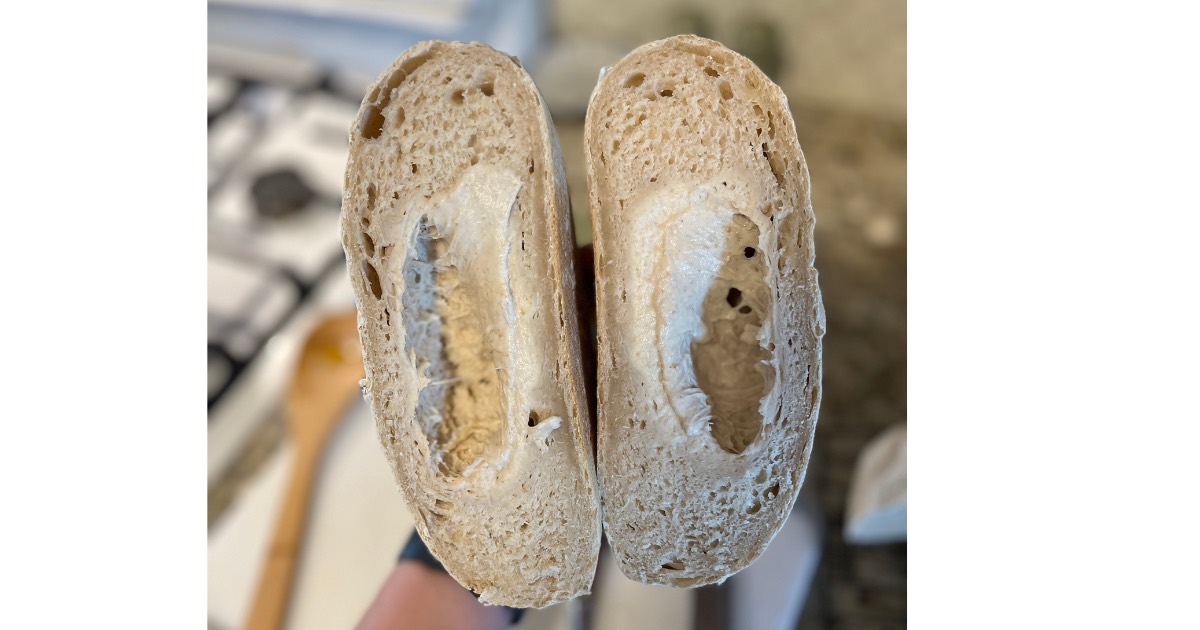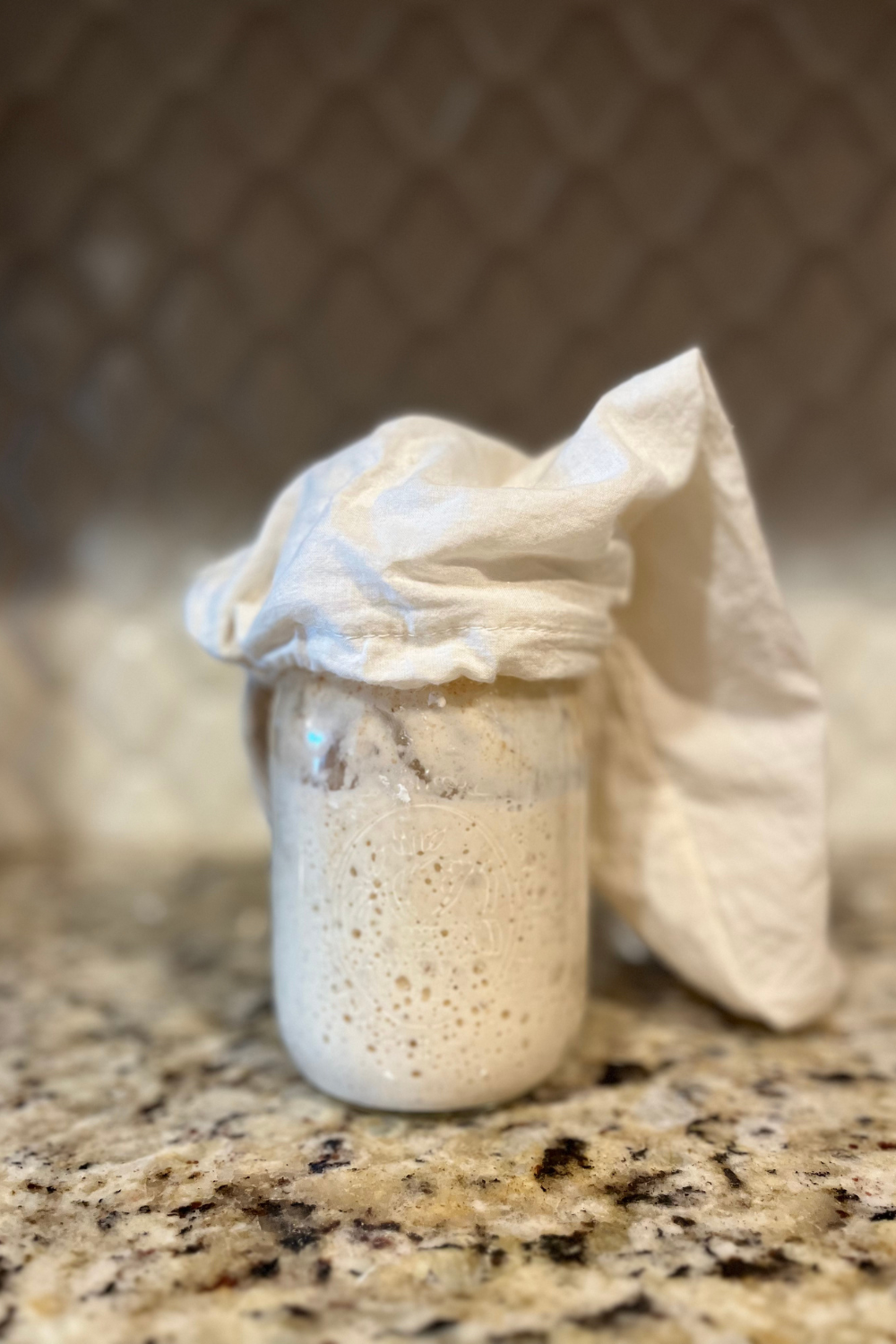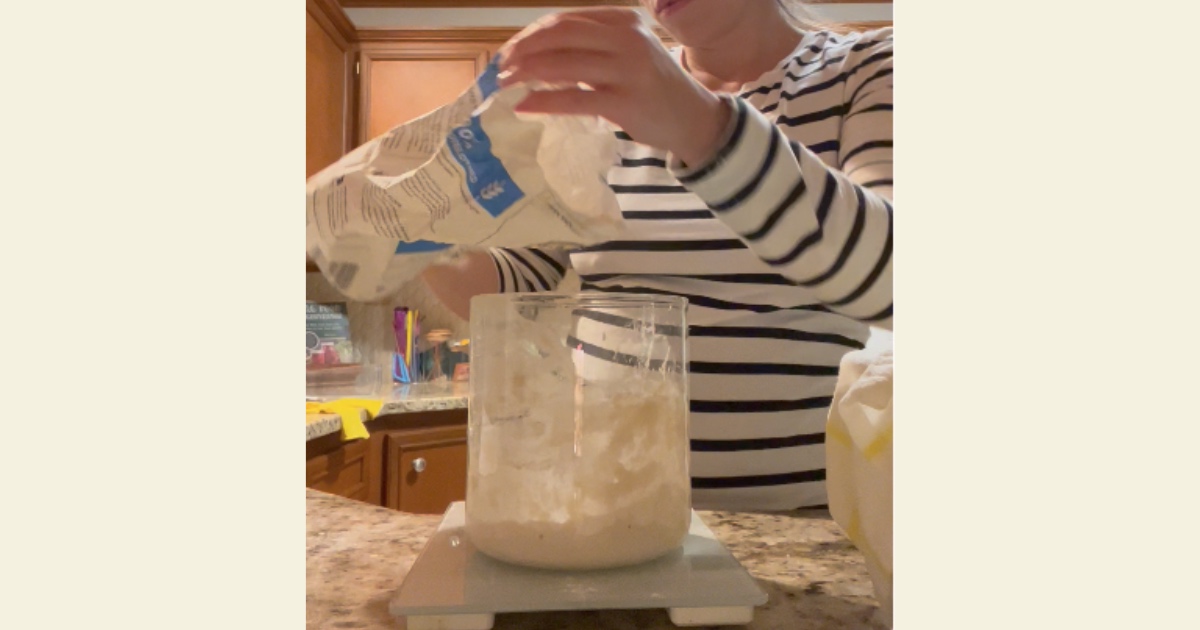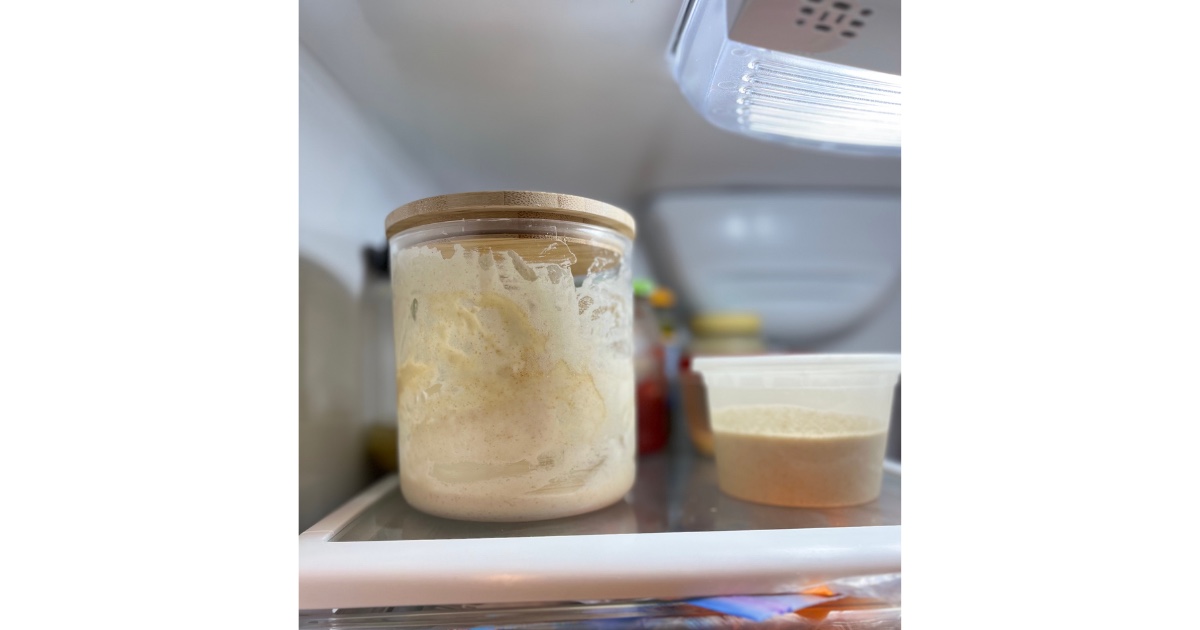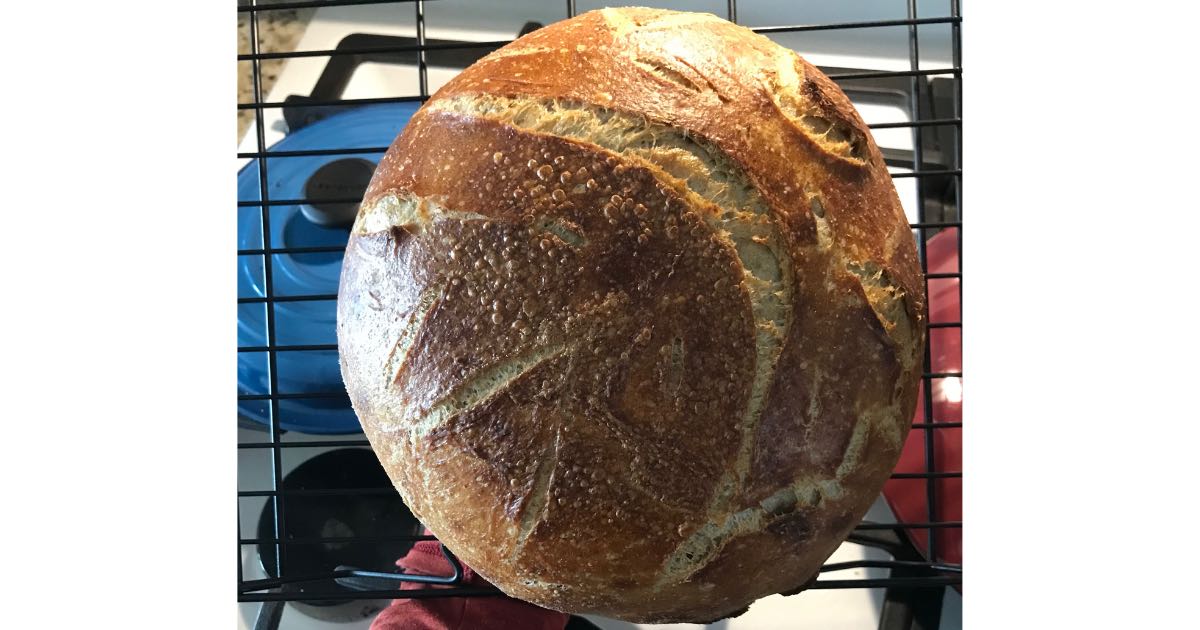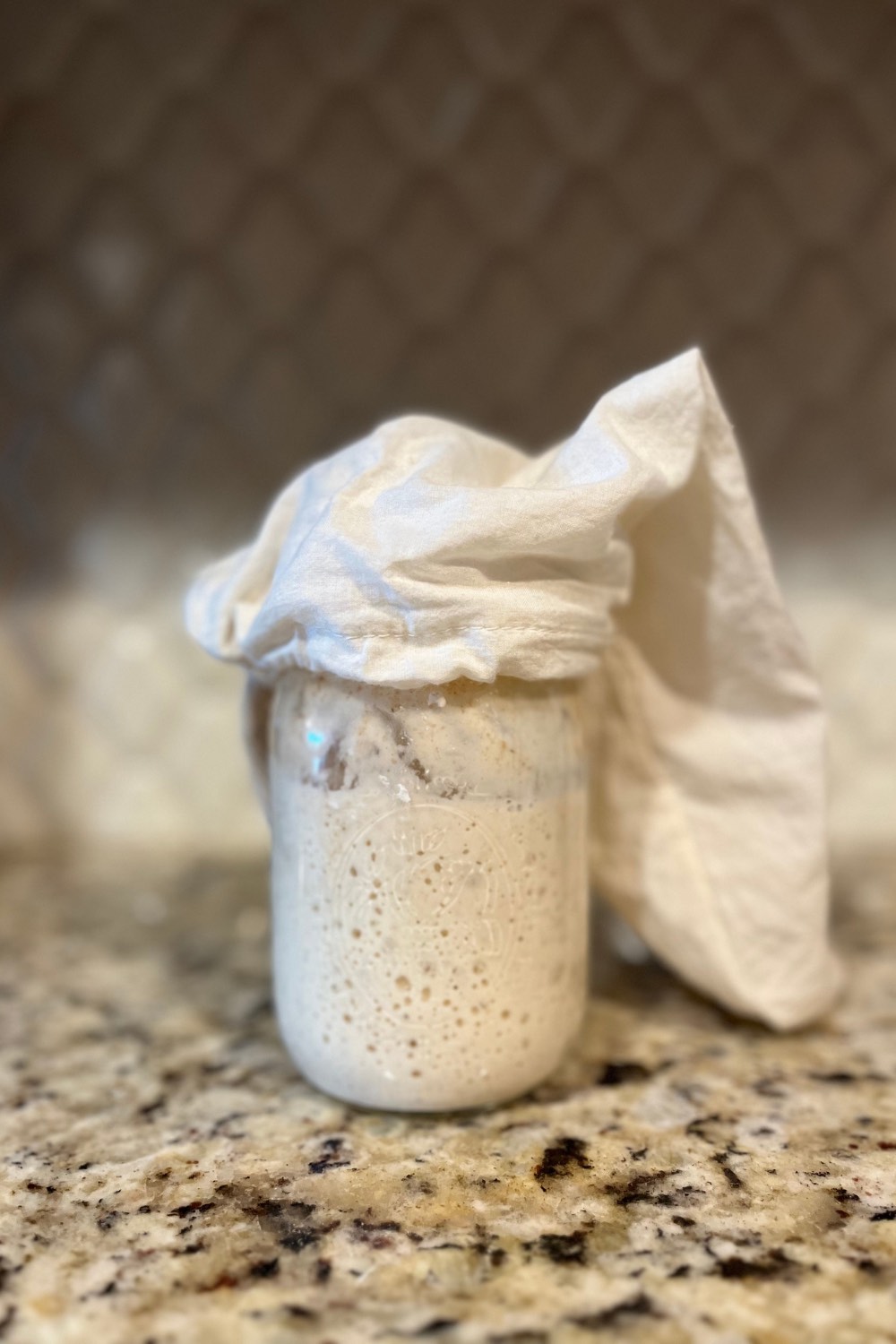Dry feeding sourdough is the process of feeding a sourdough starter flour only. If we think of flour as “food” for the sourdough starter, dry feeding acts an additional boost for the starter. It helps a hungry starter stabilize and makes a young starter more established (IE reaching the peak quicker).
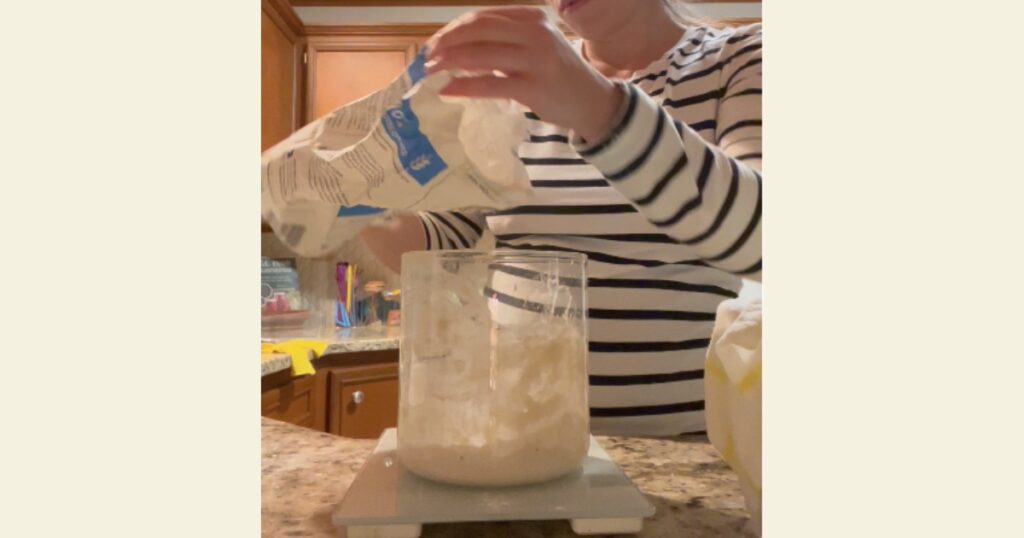
When I first began my sourdough journey, I was intimidated by the process of making a starter because there were so many different ratios to feed a sourdough starter.
Sourdough is very forgiving and can be fed more or less flour in order to thrive. It can be fed at different times of the day and even set aside for weeks (or months) depending on your method of preservation.
If you go a long period of times between feedings, your starter can become hungry and begin to smell strong (like vinegar) or develop a layer of hooch. As a sourdough starter sits on the countertop, it becomes thinner in consistency. However, it is an easy process to feed and maintain a starter.
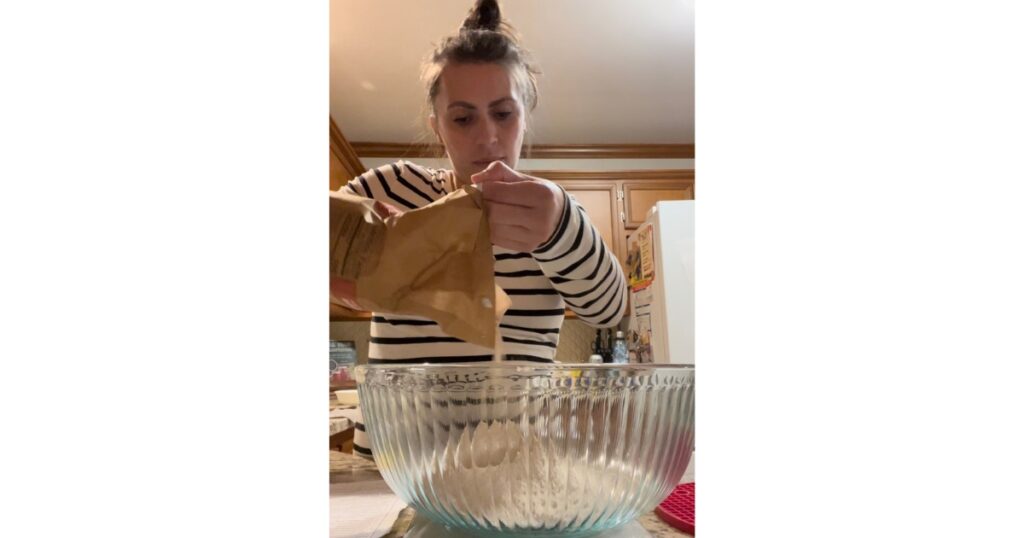
Best Sourdough Feeding Ratios
I personally enjoy the 1-1-1 ratio for a basic loaf of sourdough bread and cinnamon rolls. This means there are equal parts water, flour and starter mixed together. This 1-1-1 ratio is also referred to as 100% hydration.
Different ratios of feeding sourdough starter will lead to varying results in baked goods and the viscosity of your sourdough starter.
If you feed your sourdough starter more water, it will become liquid. A pancake like sourdough starter consistency can be better for sourdough discard recipes, to make crepes and pizza crust with minimal ingredients. This result is from a higher ratio of water to flour.
Others, like myself, prefer to balance the ratios of water to flour to sourdough starter by using a kitchen scale. When using a 1-1-1 ratio with equal parts water and flour to feed my sourdough starter, I am left with a muffin batter thick starter when initially stirred.
As a starter sits and ferments longer between feedings, it becomes runnier. A hungry starter may not have many bubbles and begin to smell acidic or more sour until fed. Some people like to dry feed their starter to give it energy (flour) without adding extra moisture (water).
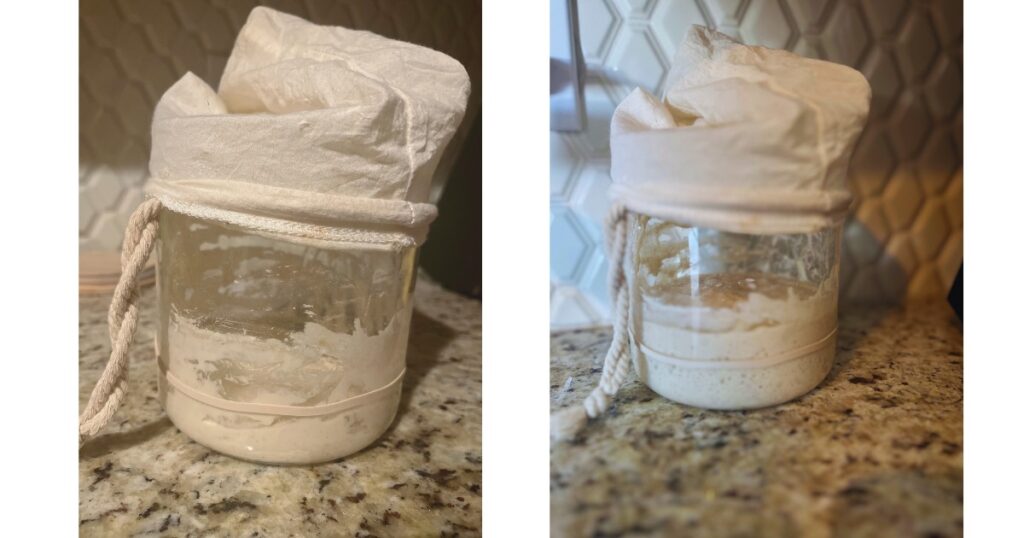
Frequently Asked Questions
What is dry feeding?
Dry feeding is when you feed your sourdough starter flour only. Do not add water. There is no specific amount to dry feed a starter, though many think 1-3 extra ounces of flour to water can be helpful.
Because flour is “food” for starter, this is a way to boost make your sourdough starter and make it less viscous (runny). Sometimes a starter just needs food (flour) instead of food and water.
Why dry feed sourdough starter?
Some reasons you may dry feed a sourdough starter include:
- Your sourdough starter is runny or watered down
- Your sourdough starter has not been fed in a while (aka it’s hungry!)
- You want your sourdough to grow faster / bigger
- Your sourdough is sluggish and/or needs extra food to get back to the strength it was prior to being neglected
Is it possible to overfeed a sourdough starter?
As long as you have a mature sourdough starter, you can not overfeed a sourdough starter. It may take longer for the sourdough starter to rise to its peak height, though the beneficial bacteria will eventually take over and create more ‘sourdough’. The bubbles will eventually spread throughout the starter and the starter will need another feeding as the food (flour) will no longer feed the hungry bacteria.
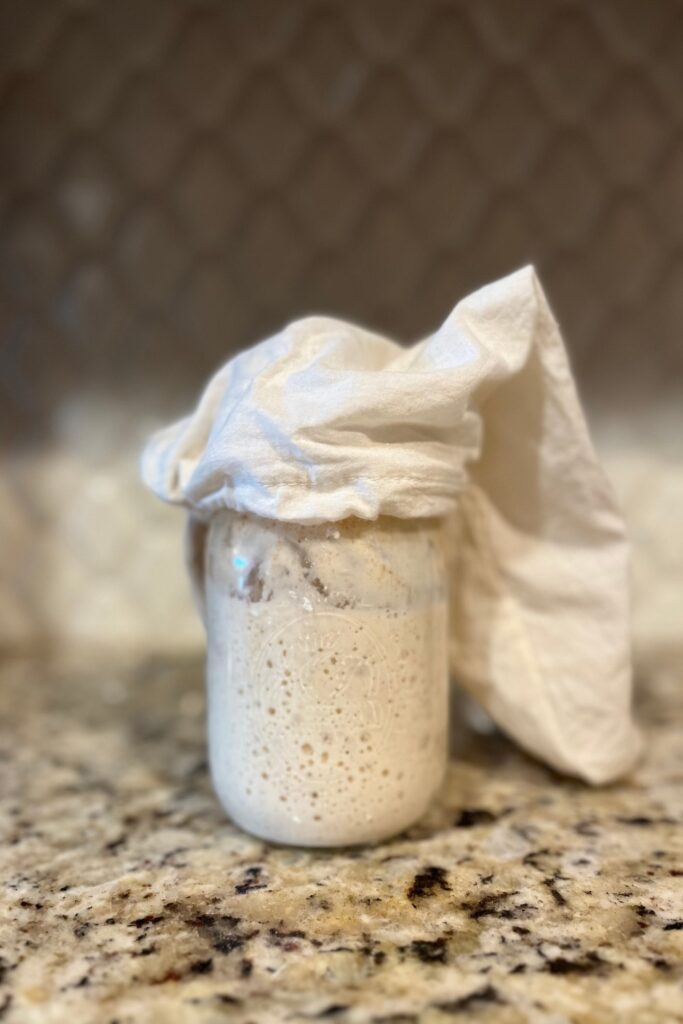
How often can you feed sourdough starter?
Sourdough starter can be fed as often as you would like – within certain perimeters. Things to consider when feeding sourdough include:
- The amount of flour and water added to the starter:
- If you add one ounce of flour and one ounce of water to your starter, it will rise quicker than 4 ounces of flour and 4 ounces of water. This is because there is more food (flour) for the sourdough starter to eat (ferment).
- The temperature of your home:
- A warmer temperature (70-75 degrees farenheit) will result in a faster rise to your sourdough starter. This means it would need to be fed sooner than a sourdough starter in a 50-55 degrees farenheit home. This is why sourdough starter can be maintained in the fridge and fed a lot slower.
- This is also why bulk fermentation is completed in the fridge as the cool temperature slows fermentation (and the breakdown of Phytic Acid and gluten). A lower temperature prevents dough (and starter) from over fermenting.
- The amount of sourdough starter remaining after discarding:
- If you have a dime size amount of sourdough starter left in your container upon discarding, you can still regenerate more starter. Add an ounce of flour and water to the starter and let it grow! If you add more than this, it could take a few hours to grow to peak size.
The moral of the story is, sourdough starter is flexible.
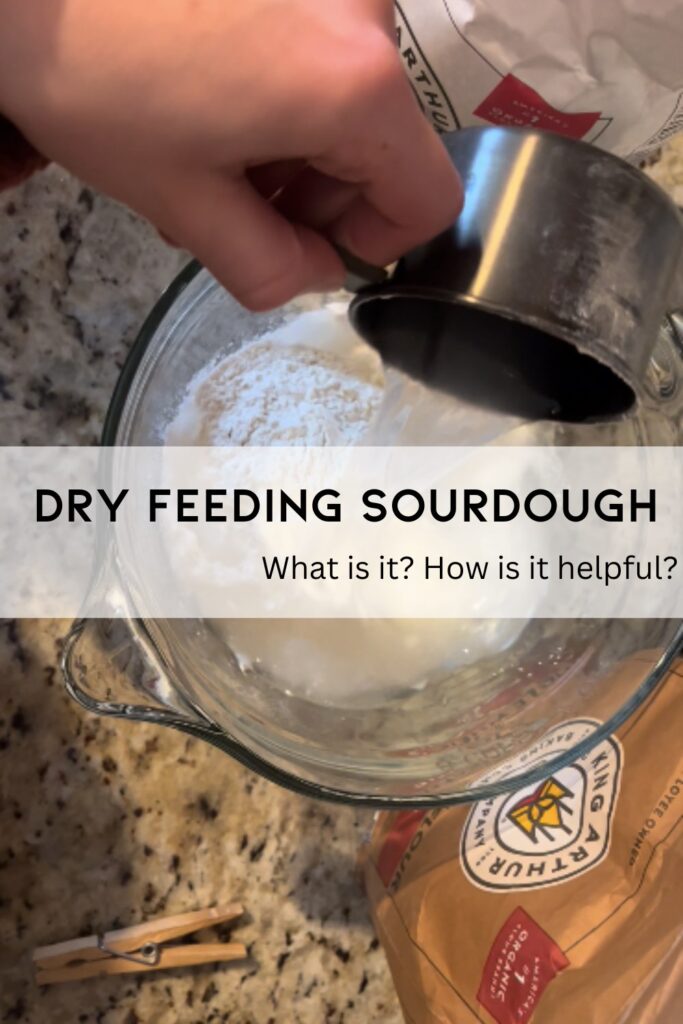
Do you feed your sourdough with specific ratios or do you ‘free ball’ it? Share with us in the comments below! We are particular to a 1:1:1 ratio – as it works for us and we do not want to mess up a good thing.

